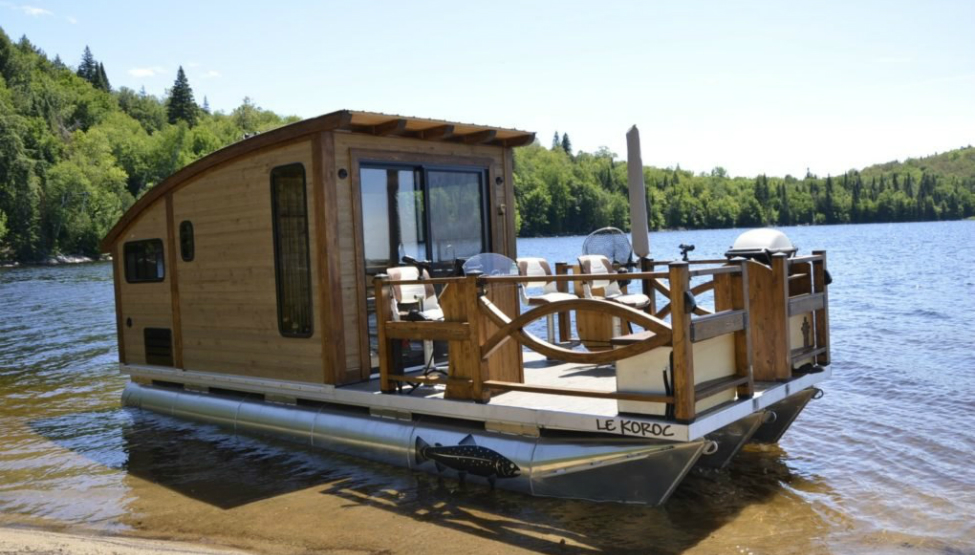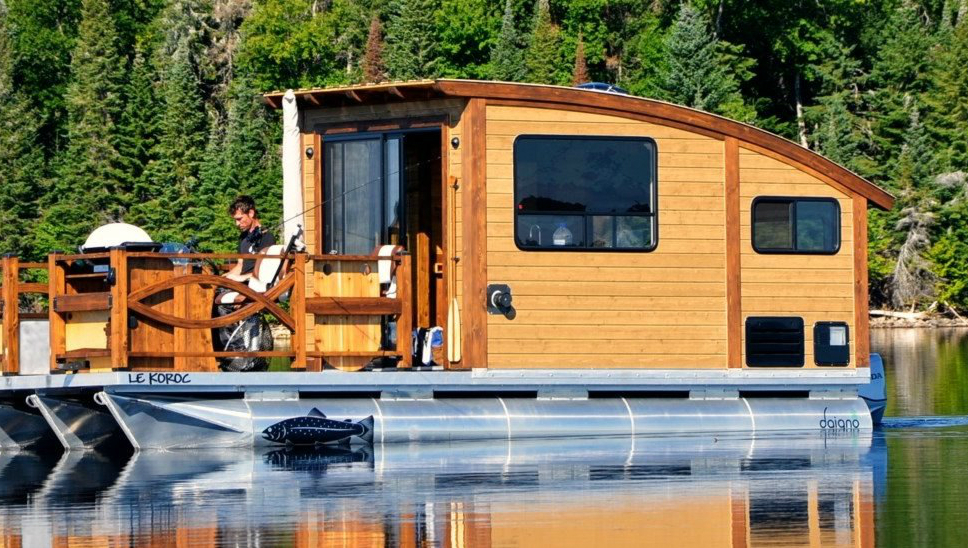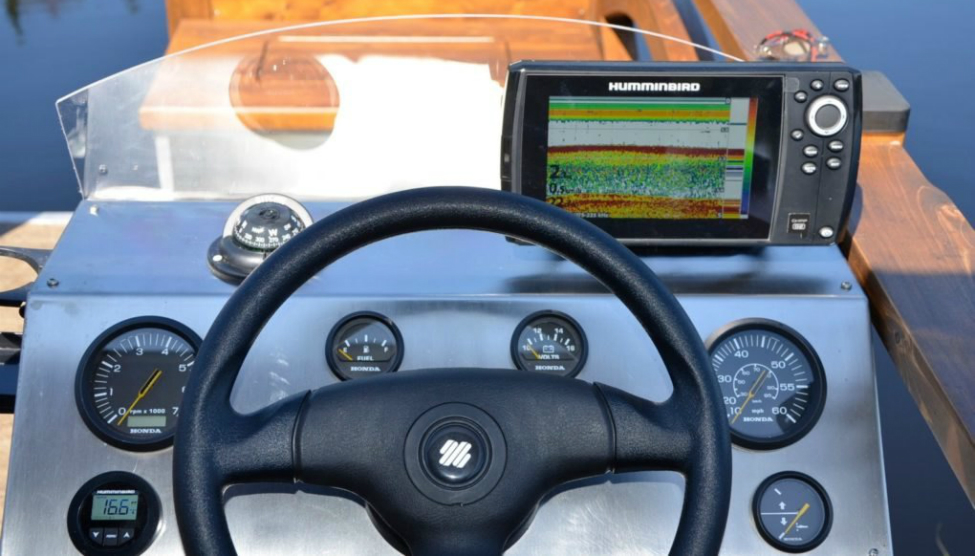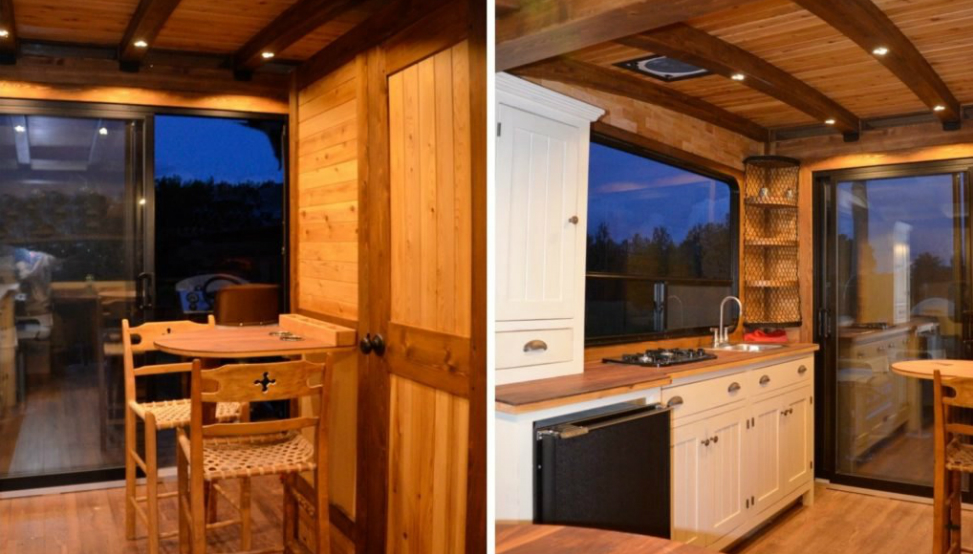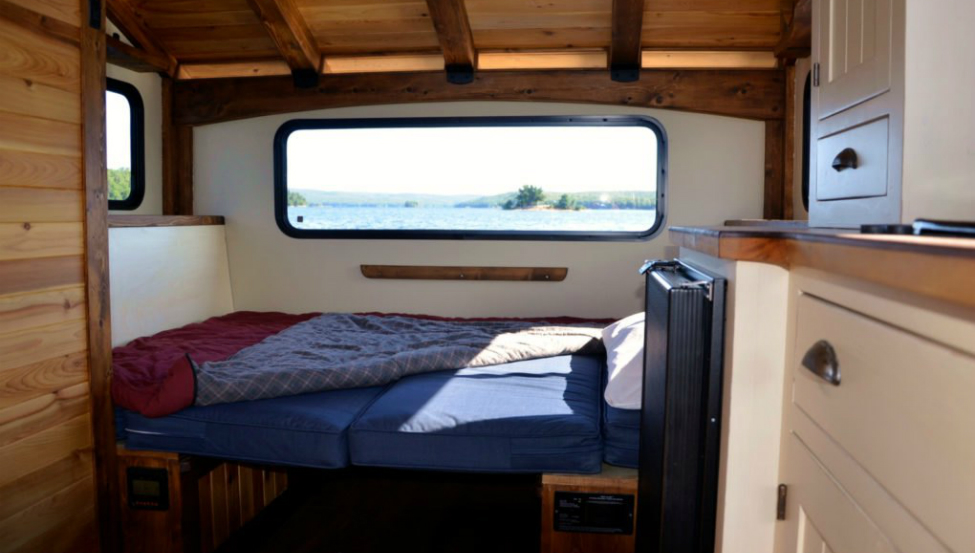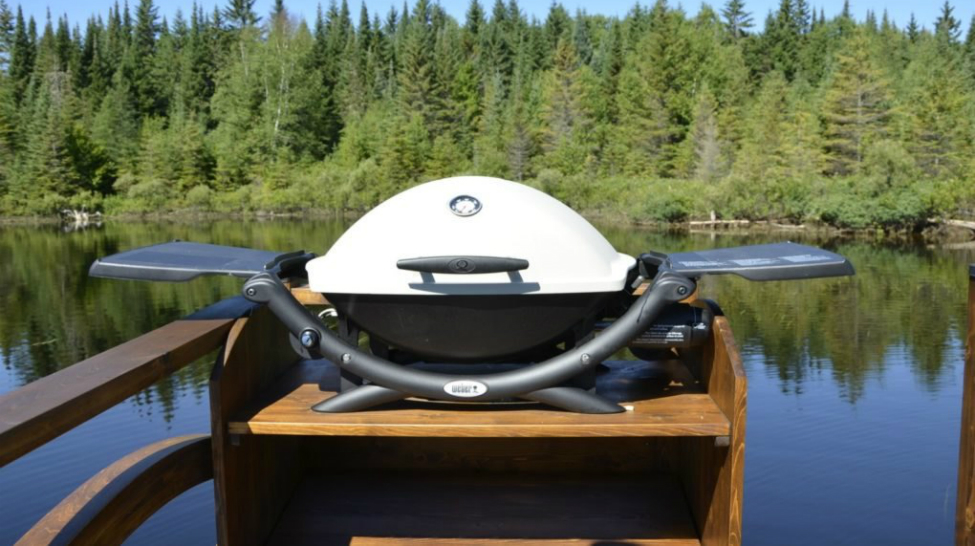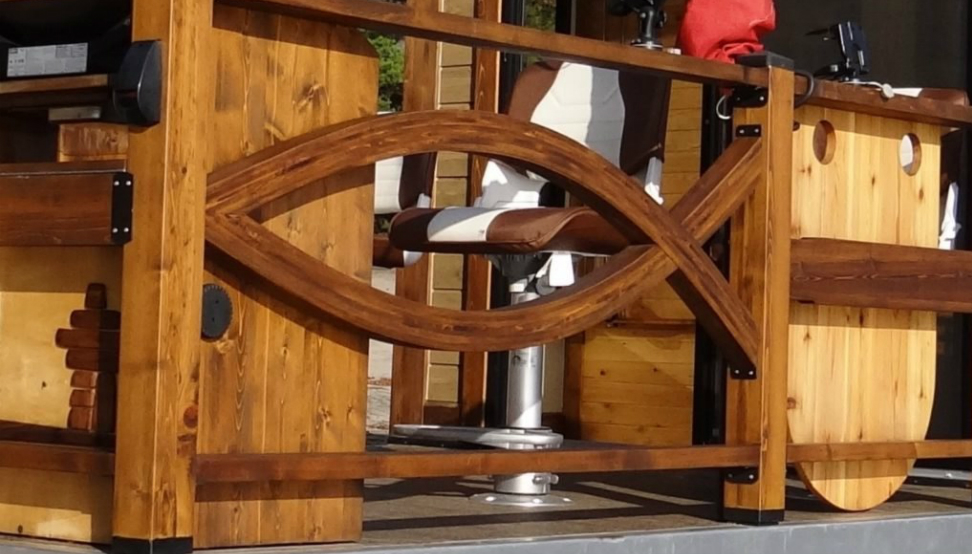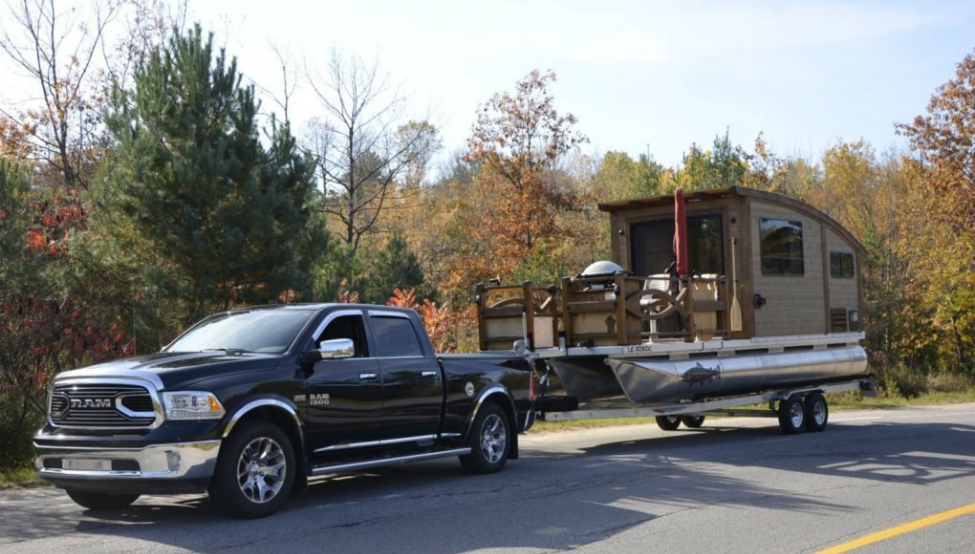If you like to fish and are intrigued by the tiny home movement and the concept of living off the grid, the Le Koroc three-float pontoon houseboat from Quebec design firm Daigno offers a unique way to combine all three.
Nearly all houseboats — even the coolest houseboats in the world — have one thing in common: They appeal to people who relish living with no permanent address. The 5,640 pound, trailerable Le Koroc is different. Because it’s light enough to tow with a medium-sized pickup truck or SUV, the vessel is also relatively easy to move on land.
Full-time living on Le Koroc could be challenging, but the Daigno houseboat is ready for off-grid fishing trips and short-term escapes.
The 26-foot long, 8-foot 6-inch wide Le Koroc is available in two configurations. The differences between the two are limited to the built-ins on their respective 10-foot 11-inch long by 8-foot 4-inch wide decks.
The Fishing Series has a live-fish tank, a cleaning station, fishing rod and net holders, and a downrigger. The Holiday Series replaces the fishing-centric elements with seating and a small center table.
The cabin configuration is identical with each version of the tiny houseboat. The 13-foot 1-inch long by 8-foot 6-inch wide enclosed space has a kitchen area with sink, two-burner stove, fridge, and cupboard. The cabin also contains a three-fixture bathroom, a two-person bistro table, and a rear area that configures for dining, seating, or sleeping. Small storage spaces are spread around the cabin (but don’t count on stowing much).
The Daigno cabin is built of laminated white cedar beams and ultralight plywood. The exterior deck flooring is marine grade plywood with a vinyl membrane overlay. The boat has a painted metal roof and painted aluminum windows and patio door.
Additional Choices for Nautical Enjoyment
- 12 more cool houseboats
- The ultimate party boat
- Hardcore habitat for full-time fishing
- A floating home to withstand a hurricane
- This boat unfolds from a backpack
- The biggest, most extravagant superyachts
Standard equipment with Le Koroc includes a 90-horsepower outboard motor, a dashboard and instrument panel with sonar, 192-liter gas tank, and a marine battery for the outboard.
A 265-watt solar panel connected to a switched and fused electrical panel charges two 6-volt batteries for lighting and the refrigerator. The vessel comes with a Suburban 6-gallon water heater, a Nova Kool 4.5-cubic foot 12-volt refrigerator, and a two-burner propane stove fueled by a 30-pound propane tank. In addition to standard navigation lights, the houseboat has indoor and outdoor recessed LED lighting.
Water systems include a 56-liter fresh water tank and a charcoal-based gray water filtration system. There are three toilet options: bio-controlled litter, chemical with integrated reservoir, and compost by Nature’s Head.
Le Koroc lists for just under $61,000. An optional four-wheel, two-axle galvanized trailer with hydraulic disc brakes costs $5,000. Available options include an 8K BTU propane heater, a fish tank with pump, a protective top for the deck, and canvas tops, and more. Or you could always rent …
